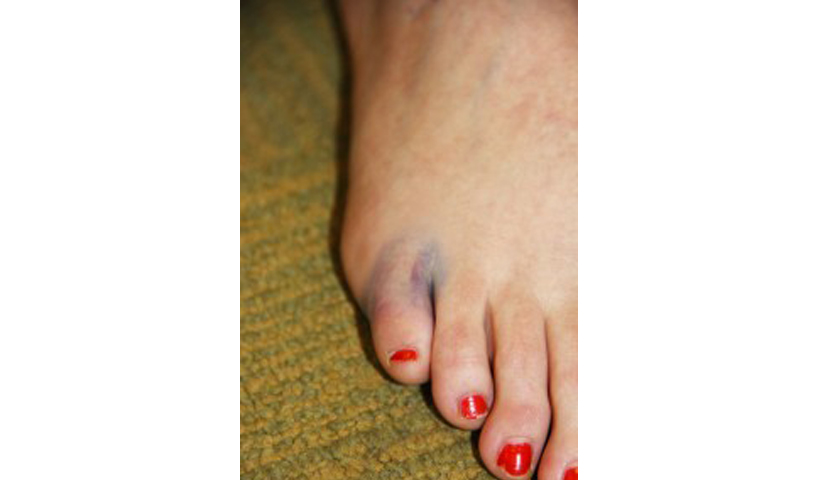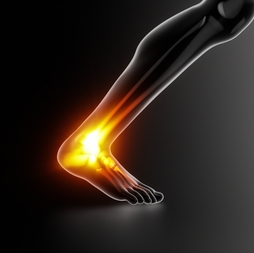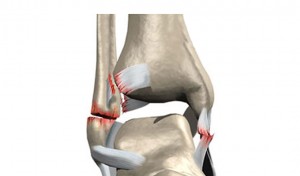Your foot cannot do anything without involving the ankle. The joint allows the foot to wiggle, rotate, point, and flex. It directs weight downward and into the bones that distribute it evenly. It helps the body balance and stay upright. So it’s concerning when something occurs that weakens or injures the supporting tissues around this major mover. Tissues like the peroneal tendons play a role in the comfort of your ankle and the stability of your foot overall even thought they are not attached to the joint itself.
Ankle Pain, Weaker Foot
Peroneal tendonitis is the swelling or thickening of the two peroneal tendons. These long, slender connective tissues are important for stabilizing the foot by pulling it outward. The tendons run down behind the fibula in the lower leg, along the outside of the ankle, behind and under the outer ankle bump, and attach to the base of the fifth metatarsal. When these thicken and become irritated, the top of the foot hurts and swells under and behind that outer bump. Usually the injury occurs because of a change in activity levels or trouble with footwear stressing the structures. It does tend to worsen and become chronic if it isn’t treated.
Sometimes the problem with the tendons is a bit more complicated than just swelling, though the symptoms are the same. In acute peroneal tendonitis, the swelling in the tissue is more severe and frequently includes a tear of some sort. This can lead to significant weakness in the foot, since the connectors are not able to perform their functions properly.
Another problem is subluxing peroneal tendonitis. In a healthy foot, the tendons are kept in their place behind the outer ankle bump by a sheath of connective tissue called a retinaculum. Sometimes when you injure your ankle, this sheath tears and allows the connectors behind it to come loose. Then, even after the original problem is healed, they slide out of place while at rest and snap back to position whenever they engage. The sliding and snapping eventually damages them and causes increasing joint and outer foot discomfort.
Relaxing the Strain
As an overuse injury, the condition tends to get worse and develop complications if not dealt with right away. When you struggle with ankle pain, swelling, and weakness, you should have the problem examined by experts like those at Country Foot Care. They will evaluate your foot and ankle function and what causes the discomfort. They may request diagnostic images or other tests to get an accurate diagnosis. Once they have determined the source of your pain is peroneal tendonitis, they can help you begin treatment to relieve the discomfort in your ankle and restore your foot strength.
The majority of these peroneal tendon problems can be resolved using conservative measures. You will need to rest your ankle for a time so that is has a chance to recover. In addition to that, the most important step for eliminating the pain is reducing the swelling. Icing and elevating the joint can help. If the discomfort is severe, you may need to immobilize it in a boot or a brace so that it is better supported and the connectors are less likely to be overworked. Once the injury has recovered, you can slowly return to your activities. You may need to change your training habits or shoes to accommodate your ankle and avoid the tendon swelling again. In the cases where a tear has taken place, you may need surgery to help restore the foot’s stability. Correcting the underlying biomechanical imbalance with a custom orthotic stabilizes your foot and reduced the pull on the peroneal tendon.
Your ankle is a strong joint but if it is swollen and uncomfortable, chances are high that you have damaged one of the connecting tissues attached to or around it. Trouble with peroneal tendonitis, whether acute or subluxing, can result in chronic discomfort and weakness if not addressed, so do not ignore the symptoms. Instead, contact Country Foot Care to make an appointment or more information to take care of your joint. Appointments can be made online through this site using the MAKE AN APPOINTMENT form located at the top of this page or by calling our offices where our friendly staff is happy to assist you.




